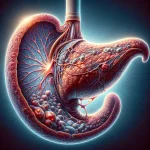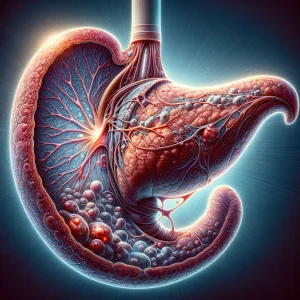Cholecystitis is inflammation of the gallbladder, often caused by a blockage from gallstones, leading to pain and sometimes infection.
Causes:- Gallstones: The most common cause. These small stones can block the tube (cystic duct) that allows bile to exit the gallbladder.
- Tumors: In rare cases, tumors in the liver or pancreas may block bile flow, leading to gallbladder inflammation.
- Infections: Bacterial infections, particularly in the bile ducts, can cause inflammation of the gallbladder.
- Injury or Trauma: Injury to the abdomen, such as from surgery or a serious accident, can trigger cholecystitis.
- Bile Duct Blockage: Anything that blocks the bile duct, such as scarring or inflammation, can lead to cholecystitis.
- Women: Cholecystitis is more common in women, especially those who are pregnant or taking hormone replacement therapy.
- People Over 40: Age increases the risk of gallstones and cholecystitis.
- Overweight or Obese Individuals: Those with excess body weight have a higher risk of developing gallstones, leading to cholecystitis.
- People with Diabetes: Diabetes can increase the risk of gallbladder disease.
- Family History of Gallstones: Genetics play a role in the likelihood of developing gallstones, and therefore, cholecystitis.

